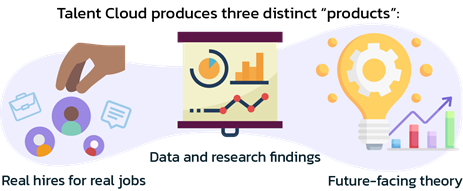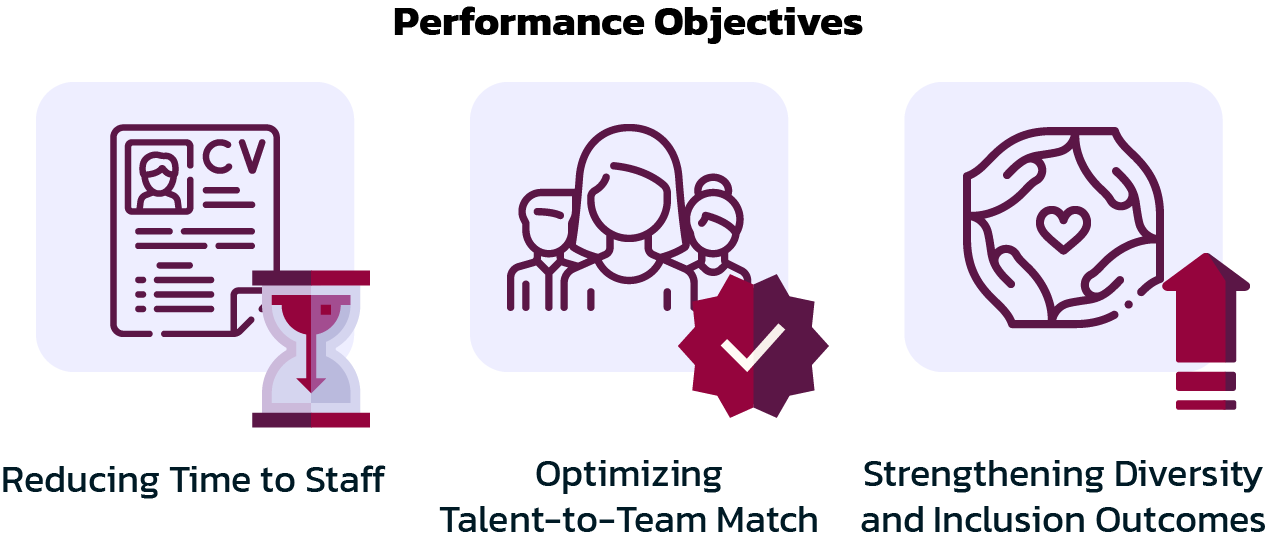
Complex problems are a target rich environment for choosing performance objectives. To make progress against them, it’s important to clearly identify specific targets to move towards and a way to measure progress.
When Talent Cloud was first being scoped, the team ran a series of workshops to better understand how current staffing practices were viewed by employees and the public. Participants were asked to identify elements in a high performing government hiring model. Workshop participants then identified a list of problems and blockers that were preventing that vision of the staffing experience from becoming a reality.
The team then analyzed this list to identify whether or not there were any critical dependencies that were running throughout all issues. Two clear underlying themes came to light. Firstly, long times to staff were causing a cascade effect of adverse issues that couldn’t be substantially mitigated unless time to staff was improved. Secondly, unless the hiring process resulted in a strong hire who worked well with the team, the whole point of the effort was undone. Once these two core issues were identified, Talent Cloud then cross-referenced the findings with rich data from the Government of Canada’s Blueprint 2020 analysis to validate and learn more about these issues before proceeding.

To address the issue of time to staff, Talent Cloud set the extremely ambitious performance objective of a 30 day time to staff, measured from the closing date of the job advertisement to the selection of the final candidate. (This count didn’t include any additional time required for security clearance, because interventions in this mandate area were out of scope for the Talent Cloud project and could therefore not be impacted by the experiment.) This meant that the solution would need to reduce the average time it took in government to identify the top candidate and initiate the final stages of a hiring process by more than 100 days. For this performance objective, it was simply a run against the clock, testing numerous points of intervention against a single goal.
The performance objective on identifying a hire with strong talent who was also a strong fit to the team proved far more complex in terms of setting clear performance objectives. Two sub-components of “fit-to-team” were identified: optimizing the talent-to-team match and ensuring that the process advanced meaningful diversity and inclusion in hiring outcomes. Because both sub-components were critical to achieving success in the talent-to-team matching process, each then became a research objective for the experiment. Where possible, quantitative measures were set to analyze outcomes, but the majority of the research related to these performance objectives came through qualitative analysis.
For optimizing the match, performance measurements related to the level of manager and applicant satisfaction at the time of hire, and long after, as well as the ratio of high calibre applicants versus industry norms.
In relation to the performance objective on diversity and inclusion, Talent Cloud aimed to increase the diversity of the initial applicant pool, as well as the final hiring outcomes, and to do so in a way that humanized the entire process. Experientially, success would mean that applicants and managers felt seen, valued, and validated in a process they believed was fair, respectful, and compassionate. As one might expect, this is less of a target where one crosses a finish line, and more of a continuous migration towards the Government of Canada’s vision for equality.